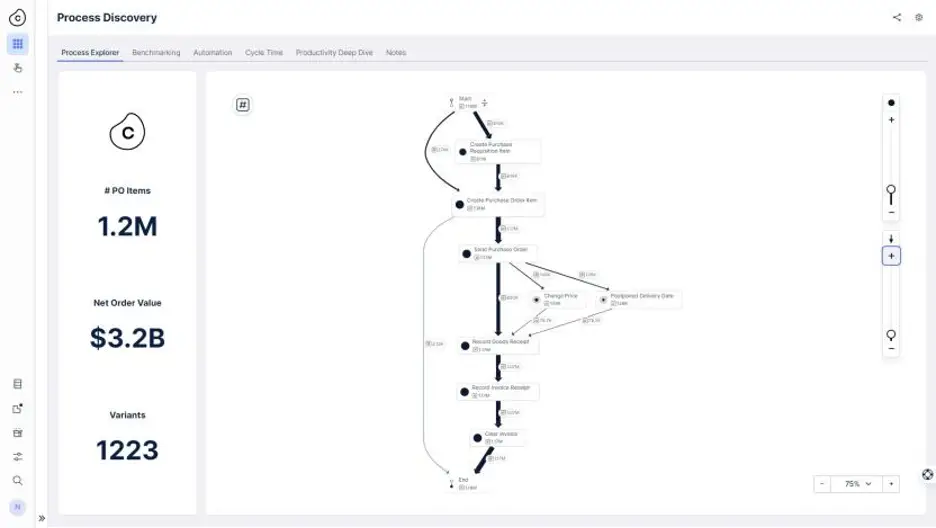Process Mining

Process Mining reveals bottlenecks and variations in end-to-end workflows, allowing for the root causes of inefficiencies to be identified and effective actions to be taken.
The closest analogy is taking an MRI of the workflow. This allows for an objective review of the process flow, almost completely eliminating anecdotal and subjective approaches.
Why Process Mining?
Process flows are essentially the circulatory system of any institution. Everything from Procurement to Sales, Payments to Deliveries revolves around processes. The more optimized these processes are, the higher the efficiency, and this is where Process Mining comes into play.
With the widespread adoption of databases and ERP programs, companies have increased their investments to digitize and optimize their processes for more efficient operations.
Almost every company has defined a template for how their processes should ideally flow. However, the actual process flow in the real world can tell a very different story
 The problem here is that many institutions cannot monitor their processes daily and cannot diagnose the difference between the "ideal" and the "existing" process flows. Process Mining steps in here, making the "existing" process flow completely transparent and facilitating accurate diagnosis.
The problem here is that many institutions cannot monitor their processes daily and cannot diagnose the difference between the "ideal" and the "existing" process flows. Process Mining steps in here, making the "existing" process flow completely transparent and facilitating accurate diagnosis.
How Does It Work?
Process Mining occurs in a cycle of 5 steps:
 Business Understanding
Business Understanding
The ideal flow of the process to be focused on and the main issues to be resolved within the process are determined.
Data Understanding – Data Preparation
Perhaps the most crucial area for the success of Process Mining. Different solutions can collect data in various ways (live connection, retrospective analysis, etc.). The simplest way is to collect Event Logs from systems in .csv files and upload them to the solution.
As cases progress within a process, they leave traces. For example, the "Order Received" entry moves towards the "Shipped" activity. Process Mining collects these digital traces and creates logs. We call these "Event Logs."
At the most basic level, three inputs are needed for these logs: "Case ID," "Activity," and "Timestamp." For more comprehensive analysis, additional attributes can be collected, such as "Urgency Status," "Branch Code," etc.

Modeling – Discovery
Once the data is collected, Process Mining truly begins.
The collected "Event Logs" provide an X-ray of the end-to-end process. In a sense, the digital twin of the institution is created. Using the framework defined during the process definition, we start to discover the optimal flow and deviations from it.

Evaluation – Implementation
The discoveries made are reviewed with business units, and it is determined whether changes are needed.
If there are diagnoses that require action, an action plan is created for them. For example, areas deemed suitable for automation can be immediately implemented with RPA.
Contact Us
Please click the SEND button after filling in the required fields.


